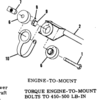SoCal 182 Driver
Cleared for Takeoff
- Joined
- Sep 11, 2019
- Messages
- 1,068
- Display Name
Display name:
SoCal 182 Driver
Friends -
Cessna 182K.
On my last two flights, while rolling down the runway at full power on take-off, and on climb-out, the CHT and Oil Temp gauges in my gauge cluster have fluctuated wildly back and forth. When I start pulling the power back, they settle down and act normally, and continue to act normally in all other phases of flight. Once the the CHT and Oil Temp gauges settle down, a cross-check against my JPI engine monitor reveals that the CHT and Oil Temp readings are consistent with the JPI. The other gauges in the cluster are acting normally in all phases of flight -- no wild fluctuations.
I'd appreciate suggestions and ideas about what's going on here, and ideas for a fix.
Thanks!
Cessna 182K.
On my last two flights, while rolling down the runway at full power on take-off, and on climb-out, the CHT and Oil Temp gauges in my gauge cluster have fluctuated wildly back and forth. When I start pulling the power back, they settle down and act normally, and continue to act normally in all other phases of flight. Once the the CHT and Oil Temp gauges settle down, a cross-check against my JPI engine monitor reveals that the CHT and Oil Temp readings are consistent with the JPI. The other gauges in the cluster are acting normally in all phases of flight -- no wild fluctuations.
I'd appreciate suggestions and ideas about what's going on here, and ideas for a fix.
Thanks!
Last edited:


